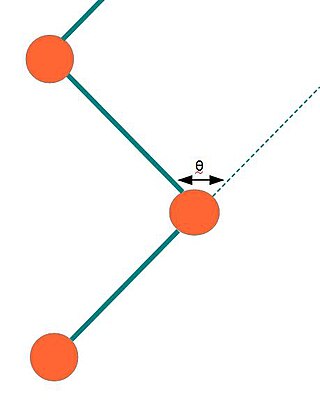Top Qs
Timeline
Chat
Perspective
Kuhn length
Idealization in polymer thermodynamics From Wikipedia, the free encyclopedia
Remove ads
The Kuhn length is a theoretical treatment, developed by Werner Kuhn, in which a real polymer chain is considered as a collection of Kuhn segments each with a Kuhn length . Each Kuhn segment can be thought of as if they are freely jointed with each other.[1][2][3][4] Each segment in a freely jointed chain can randomly orient in any direction without the influence of any forces, independent of the directions taken by other segments. Instead of considering a real chain consisting of bonds and with fixed bond angles, torsion angles, and bond lengths, Kuhn considered an equivalent ideal chain with connected segments, now called Kuhn segments, that can orient in any random direction.
This article needs additional citations for verification. (December 2009) |

The length of a fully stretched chain is for the Kuhn segment chain.[5] In the simplest treatment, such a chain follows the random walk model, where each step taken in a random direction is independent of the directions taken in the previous steps, forming a random coil. The mean square end-to-end distance for a chain satisfying the random walk model is .
Since the space occupied by a segment in the polymer chain cannot be taken by another segment, a self-avoiding random walk model can also be used. The Kuhn segment construction is useful in that it allows complicated polymers to be treated with simplified models as either a random walk or a self-avoiding walk, which can simplify the treatment considerably.
For an actual homopolymer chain (consists of the same repeat units) with bond length and bond angle θ with a dihedral angle energy potential,[clarification needed] the mean square end-to-end distance can be obtained as
- ,
- where is the average cosine of the dihedral angle.
The fully stretched length . By equating the two expressions for and the two expressions for from the actual chain and the equivalent chain with Kuhn segments, the number of Kuhn segments and the Kuhn segment length can be obtained.
For worm-like chain, Kuhn length equals two times the persistence length.[6]
Remove ads
References
Wikiwand - on
Seamless Wikipedia browsing. On steroids.
Remove ads











